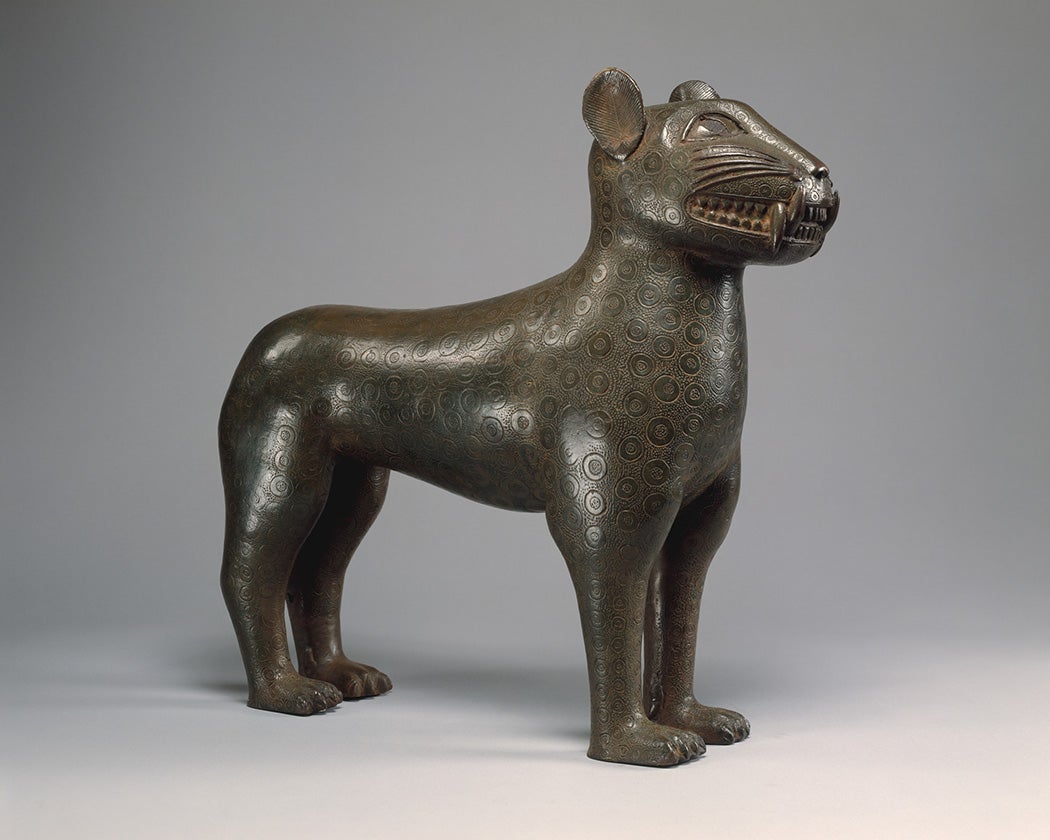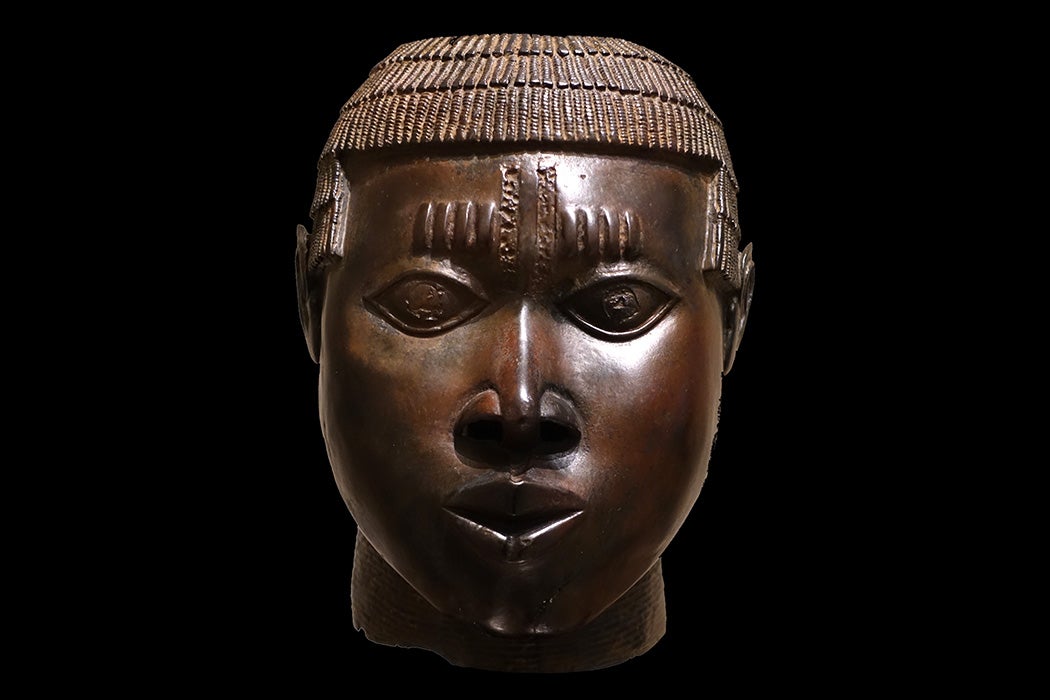In 1897, when British soldiers annexed the Kingdom of Benin in what is now southern Nigeria, Benin City was sacked. Hundreds of metal and marble sculptures, some dating back to the thirteenth century, were carted off to Europe. Many others were destroyed during a massacre that left untold Africans dead.
Like the Parthenon Marbles, the Benin Bronzes, as they came to be known, are the subject of impassioned debate over cultural heritage, restitution and repatriation, and the function of museums. A few of the original sculptures (and some copies) have been returned to Nigeria, which has campaigned for their return since independence in 1960. Hundreds remain in museums in the United Kingdom, Germany, Austria, and the United States.
Scholar Annie E. Coombes writes that the original September 1897 exhibition at the British Museum of some three hundred Benin brass plaques set a template for the reception and debate about the looted works.
The exhibit caused a sensation. Viewers—in person and through the medium of the press—were amazed that people they had been led to believe were “savages” had produced such things.
“Intrigued and perplexed that work of such technical expertise and naturalism had been found in such quantities in Africa, the national, local, scientific, and middle-class illustrated press all postulated hypotheses to ‘explain’ the paradox,” Coombes writes.

Initially, the works were attributed to Portuguese or Egyptian origin. As Coombes describes it, the “admissibility of an African origin” was largely the result of politics within the British Museum itself. The museum’s experts in Egyptology were well established, but by the late 1890s, ethnologists and anthropologists there also wanted national recognition and the financial support it signified. That meant giving greater status to African works, like those from Benin.
The context was imperial rivalry between European powers, like Britain and Germany. Symbolically, competition in Africa would be measured by museum collections: A valuable trove of African artworks would signify power. British “anthropologists consistently played the German threat as a card in their bid for popular and government support,” Coombes writes.
Weekly Newsletter
For the new field of anthropology, which wanted the imprimatur of science, keeping the bronzes “as both evidence of barbaric savagery and artistic anomaly” became a matter of “national urgency,” according to Coombes.
Coombes notes that the “contradictions that made [the bronzes] such potent icons in the late nineteenth and early twentieth centuries” are still going today. Through the twentieth century and into the twenty-first, British governments “have argued for their continued custody of this property on the basis of the internationalism of museum culture.” At the same time, she notes, they have asserted “the significance of the ‘bronzes’ and marbles as a part of British national heritage.”







